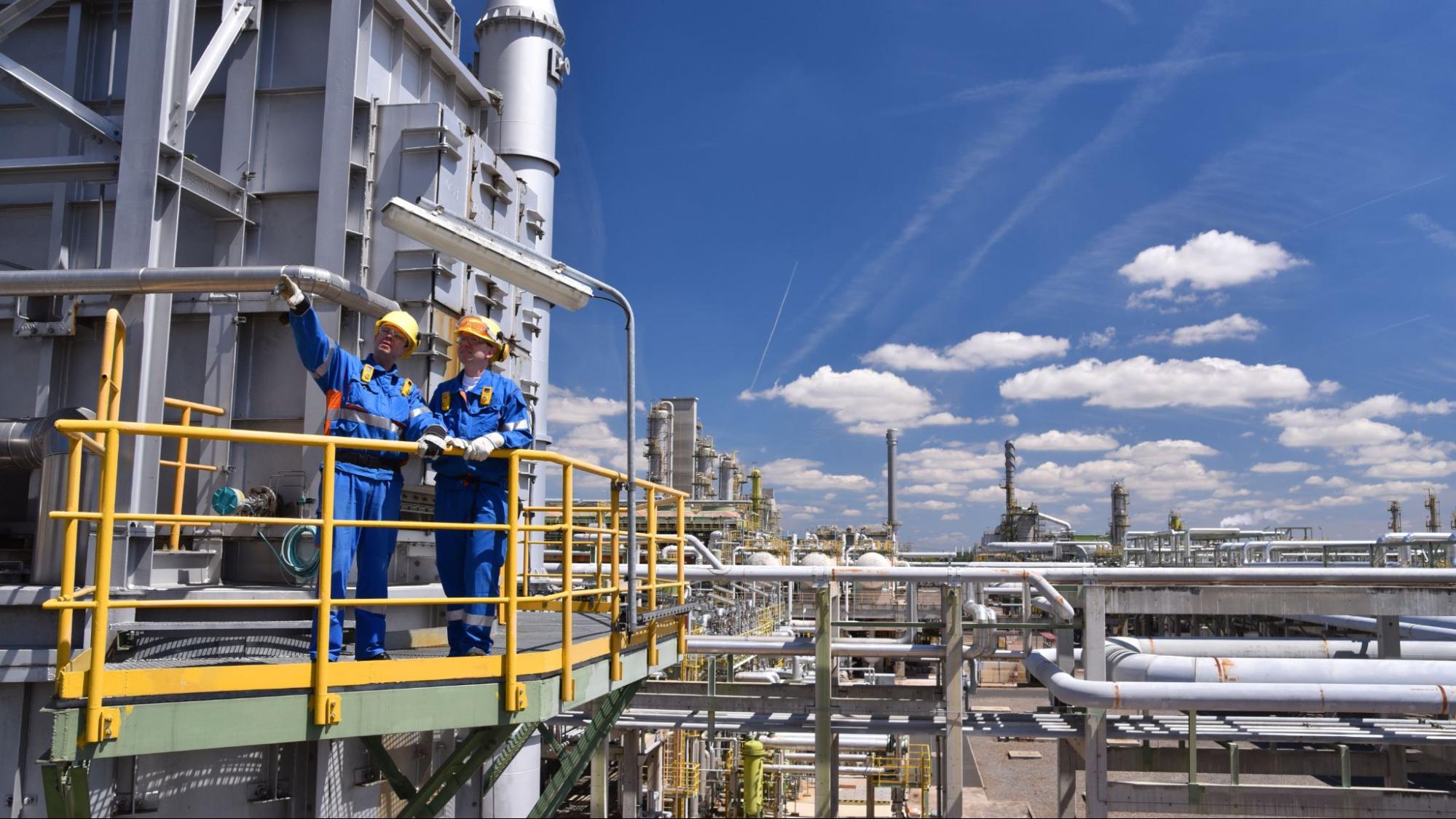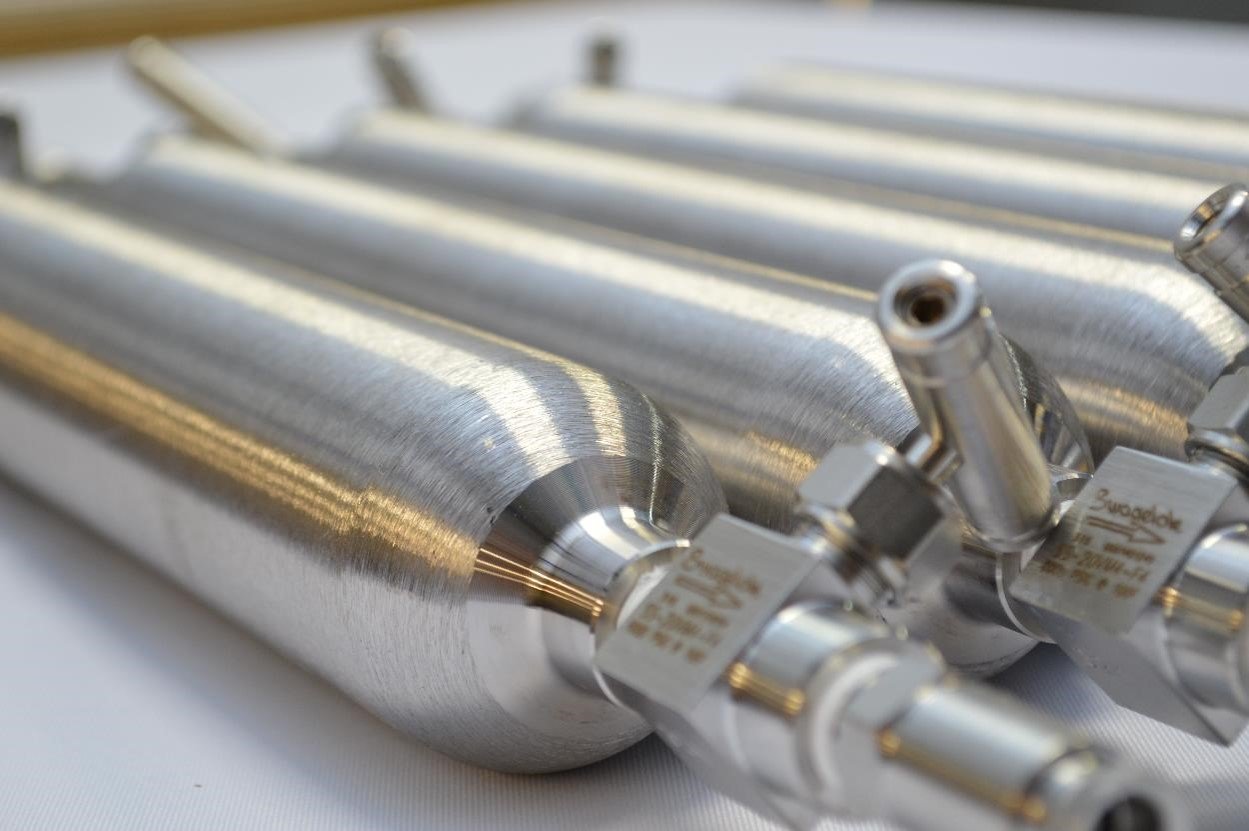Learn more about how to maintain equipment reliability, prevent corrosion, ensure accurate sampling, and minimize leaks.
 Alberta refineries require complex machinery and sophisticated processes to handle the harsh fluids of unconventional oil production, which creates specific challenges that can disrupt operations and threaten profitability.
Alberta refineries require complex machinery and sophisticated processes to handle the harsh fluids of unconventional oil production, which creates specific challenges that can disrupt operations and threaten profitability.
To establish safe and efficient operations, Alberta refineries must find industrial fluid oil solutions to maintain equipment reliability, prevent corrosion, ensure accurate process fluid sampling, and minimize leakage and emissions. Here are some of the main challenges faced in industrial oil processes and how Alberta refineries can address them proactively.
Refineries depend on pumps and other rotating equipment; seal support systems are critical to their reliability.
One of the biggest concerns for refineries is keeping equipment running and available for service. Fluid processing equipment must be able to withstand harsh chemicals to prevent seal and hardware failures. Mechanical failures can lead to decreased efficiency, unplanned downtime, and lost production, which can be financially devastating. Fortunately, there are many industrial oil fluid solutions to the reliability problems commonly encountered in Alberta refineries, especially seal support systems.
Because Northern Alberta refining operations process high viscosity, heavy crude oil, clogged seals, and orifices are common. Plant water can also contain minerals that can build up in piping and valves, obstructing flow over time. In seal support systems, obstructed flow to the seal chamber can lead to mechanical seal damage or failure.
For this reason, it’s essential to maintain the quality of the flush fluid. Contaminants in the flush fluid can clog piping, flow control valves, flow meters, or other components. If the flush fluid does contain contaminants, preventive measures like easily maintained filters or strainers can reduce the risk of clog-related problems before they happen.
Another of the flush system’s jobs is to prevent the mechanical seal faces from getting too hot by lubricating them and reducing friction. Insufficient flow, low flush pressure, or a failure in upstream heat exchangers can lead to overheating in the seal chamber, which can quickly cause major problems if not addressed.
Overheating can eventually lead to heat checking. Mechanical seal heat checking can be identified by fine radial cracks in the seal face caused by excessive stress from the mechanical load and thermal expansion. These cracks may be barely visible to the naked eye, so heat checking can go unnoticed until failure occurs and it’s too late to save the seal. The risk of heat checking increases with high temperatures and high-viscosity fluids like those processed by Alberta refineries.
Too much heat can easily cause complete seal failure. Once the seal has failed, correcting the problem becomes much more difficult, so it’s important to be proactive by using high-quality components and regularly inspecting the system to ensure everything is operating as expected. Additionally, incorporating temperature gauges in seal support systems can help you identify temperature changes before they get out of control and cause seal damage.
Material selection and quality are critical to prevent corrosion from the harsh process fluids in Northern Alberta oil and gas operations.
The crude oil from Northern Alberta’s oil sands contains water, chlorides, heavy metals, hydrogen sulfide, and debris that can be extremely damaging to metals used for piping, tubing, and any other components that contact process fluids. Stainless steel is commonly used in refineries because it’s readily available and has good resistance to corrosion and oxidation. However, not all stainless steel is the same. Metallurgical quality can be the difference that keeps your rotating equipment running reliably, efficiently, and safely.
Stainless steel alloys contain between 10.5 and 30 percent chromium. The more chromium, the better the corrosion resistance. Many stainless steels also include nickel, which further improves corrosion resistance, especially when handling acidic fluids like those found in Alberta refineries. Swagelok's specifications for stainless steel chromium and nickel content are at the high ends of the ranges specified by industry standards, so they offer the best corrosion resistance in the industry.
Surface finish is another factor influencing corrosion resistance. A rougher surface finish is more prone to corrosion because abrasive particles and corrosive fluids can become trapped in surface imperfections, where they build up and damage the metal. A smooth surface finish promotes more effective flushing to remove any corrosive residue. Whenever possible, tubing should be used rather than piping. Extruded tubing has a smoother, more consistent internal surface finish than piping, producing better flow characteristics and better corrosion resistance.
Getting a representative sample is necessary to ensure quality and efficiency—but accurate sampling isn’t always easy.
The characteristics of unconventional oil can vary substantially over time, which presents processing challenges. Understanding these changes in fluid characterization is essential to ensuring safety and reliability in Alberta refineries. Regular sampling and analysis—with well-mixed, representative samples—can tell you when process parameters like pump pressure or line size need to be adjusted.
 However, if the sample is not representative of the process fluid, the analysis will be inaccurate and can hide potential problems, keeping you from managing your fluid system proactively. Failing to get representative samples and act on them can result in increased system corrosion, fouling, clogs, leaks, and quality issues.
However, if the sample is not representative of the process fluid, the analysis will be inaccurate and can hide potential problems, keeping you from managing your fluid system proactively. Failing to get representative samples and act on them can result in increased system corrosion, fouling, clogs, leaks, and quality issues.
A grab sampling measurement may not be representative if the sample contains different phases than the process fluid—for example, if a liquid sample contains too much vapour, or a gas sample contains condensation. In addition, solid particles can contaminate the sample—especially with heavy, dirty process fluids. To prevent these problems, use pressurized sample cylinders for sampling volatile liquids or gases and draw samples from the middle of the pipe and away from dead legs to ensure an accurate mixture.
A grab sampling specialist can provide industrial oil fluid solutions to improve grab sampling stations, so they are safe and provide accurate, representative samples. Some of the factors that should be taken into account include:
A well-designed grab sampling station includes all features mounted on a single panel, including a geared valve assembly for ease of use, quick-connect couplings for repeatable connections, a flexible connection hose, a pressure gauge, and cylinder support (if using sample cylinders).
Leaks, whether slow or sudden, are a cause for concern as they can cause loss of product and unsafe conditions.
Mechanical seals are designed to minimize leakage from rotating equipment. They inherently produce a very small amount of leakage, but it normally evaporates immediately and isn’t a problem. When leaks become noticeable, though, they are usually a concern.
Leaks often occur when tube and pipe fittings are installed incorrectly—for example, not fully inserting tubing, under- or over-tightening connections, or locating bends too close to the end of the tube. Leaks can also be caused by surface defects like dents or scratches, when component materials are not rated for the process conditions, or when using low-quality components.
Using tubing instead of piping where possible can help minimize leakage. Tube fittings are designed not to leak because they have either a metal-to-metal seal or a mating component with an elastomeric seal. Piping, on the other hand, often requires threaded connections, pipe dope, and/or PTFE tape to prevent leakage. Pipes can be welded, but this adds time and money to installation. Tubing can be installed more easily with fewer potential leak points.
Valves are a common source of leaks and fugitive emissions in refineries. Leaks can occur when valves wear out over time, were improperly installed, or loosen due to vibration. Upgrading older valves with newer designs and materials or leakless designs like bellows valves and diaphragm valves can help significantly reduce leaks and emissions over time.
Like most other problems encountered in refineries, the best industrial oil fluid solutions for preventing leaks involve using high-quality components. Component selection is best done with an industry expert who can perform an onsite consultation to help identify high-risk components and make recommendations based on process specifics.
Edmonton Valve & Fitting understands the challenges of processing harsh fluids in Alberta refineries. If you’re looking for industrial fluid oil solutions to ensure equipment reliability, improve grab sampling accuracy, or prevent corrosion and leaks, we can help.
Our Field Advisors can perform a fluid systems evaluation to determine the best industrial oil fluid solutions to improve your refinery’s performance. We offer leak detection services and can recommend high-quality valves, hoses, tube fittings, and other components that will be the best fit for your specific process parameters.

Lorem ipsum dolor sit amet, consectetur adipiscing elit. Suspendisse tempor nisi ut vehicula commodo.
Learn More →
Lorem ipsum dolor sit amet, consectetur adipiscing elit. Suspendisse tempor nisi ut vehicula commodo.
Learn More →
Lorem ipsum dolor sit amet, consectetur adipiscing elit. Suspendisse tempor nisi ut vehicula commodo.
Learn More →
Lorem ipsum dolor sit amet, consectetur adipiscing elit. Suspendisse tempor nisi ut vehicula commodo.
Learn More →
Lorem ipsum dolor sit amet, consectetur adipiscing elit. Suspendisse tempor nisi ut vehicula commodo.
Learn More →
Lorem ipsum dolor sit amet, consectetur adipiscing elit. Suspendisse tempor nisi ut vehicula commodo.
Learn More →
Lorem ipsum dolor sit amet, consectetur adipiscing elit. Suspendisse tempor nisi ut vehicula commodo.
Learn More →
Lorem ipsum dolor sit amet, consectetur adipiscing elit. Suspendisse tempor nisi ut vehicula commodo.
Learn More →
Lorem ipsum dolor sit amet, consectetur adipiscing elit. Suspendisse tempor nisi ut vehicula commodo.
Learn More →Swagelok is a $2B developer of industrial fluid system products and services. Swagelok Edmonton is an authorized Swagelok Sales and Service Centre serving Canadian companies in clean energy, chemical, oil and gas, and other industries. Proud member of the Canadian Council for Aboriginal Business.
Tel: 780-437-0640.
Swagelok Edmonton values your privacy. This website uses cookies to enhance user experience and analyze performance and traffic. Our policies are posted here.
Login/Register | Privacy | Safe Selection | Centre Locator | Sitemap | Legal
© 2012-2024 Edmonton Valve & Fitting Inc.